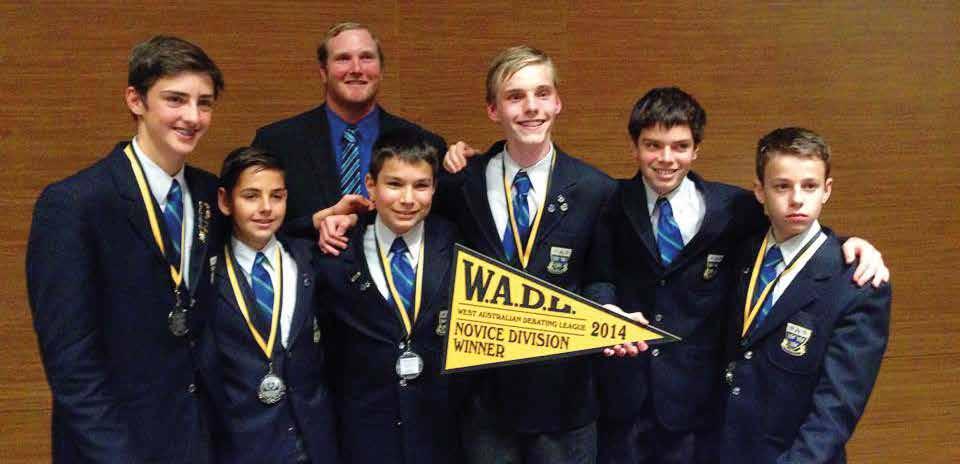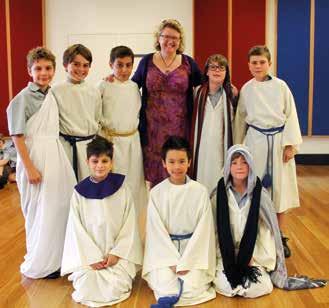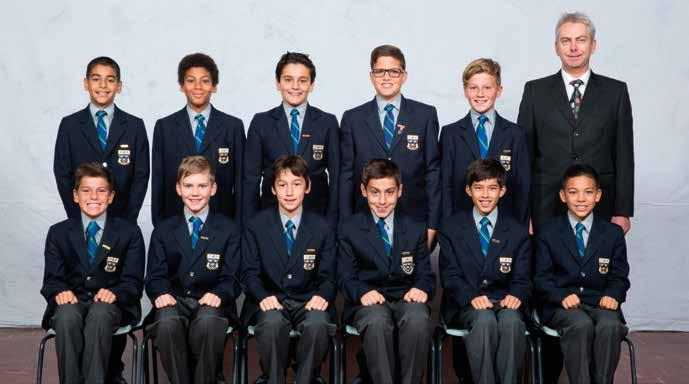Astronomy & Space Science Mr Bill Cooper Observatory Manager In 2014 the astronomy students linked up with the Gemini observatory thanks to the hard work of Samuel Carbone (10.1), who came second in the Gemini imaging competition. This year we were able to link up with astronomers in Alaska and they talked for an hour about imaging and image processing with the Gemini telescopes. It was interesting for students to compare the different approaches used by a professional observatory handling gigabyte images and our own school observatory. I think they were surprised at how in many ways both observatories follow the same procedure; image calibration with master dark bias flat and science images, then stacking and processing before combing red green and blue images to make a final colour image. This year’s astronomy scholars, Julian Chilcott (11.6) and Luke Di Dio (11.1) and next year’s astronomy scholar, James Pears (10.7), took their own telescopes, as well as the 16” Dobsonian, to Dwellingup for the Year 6 camp. The sky was very cloudy with just brief holes of opportunity to tantalise. The boys did a splendid job given the poor conditions and most of the evening was spent taking part in a Q & A, which apparently the Year 6 boys enjoyed. In terms of observation, our autumn camp at Camp Kelly was disappointing, as it was just so cold. Condensation built up on all the mirrors and lenses so quickly it was near impossible to keep them clear. It was a beautiful clear night and the Milky Way always looks spectacular at this time of the year. We enjoyed the night sky by becoming visual observers and watching passing satellites and using heavens above.com to name them along with shooting stars. Julian Chilcott and Luke Di Dio have both been working on their own respective observatories. At the end of last year we sent the RCOS telescope mirrors away to be re-silvered. We had a new apogee camera and we were able to obtain funding for a new paramount. With the narrow spectrum filters we bought last year the Brockwell observatory has re-invented itself and gained a new lease of life in these increasingly light polluted skies. Julian has been busy starting from step one reassembling the telescope. Where is north? Where are the cables going to go? How to balance such a heavy setup. Currently he is collimating the optics, which is making sure all the optical elements are aligned along the optical path and then mapping, a process that allows the computer to
compensate for all of the inadequacies of the mechanical elements in the system such as telescope droop and gear slop. It has been quite an undertaking but Julian can quite happily set up his own observatory now. With the old paramount decommissioned we had an opportunity to upgrade the setup in the old observatory. Luke has been overseeing the new pier and like Julian starting from scratch to establish a whole new setup for ours SBIG spectrometer. Luke dismantled the ten inch Meade Lx200 and has mounted it on the paramount. After collimating and mapping we hope to see the first spectra from this new setup. Winter camp weather was appalling, but the senior boys put on a series of lectures and we ran various workshops. Samuel Carbone worked with those students interested in entering the Gemini competition. James Heald (11.2) just recently back from international spec school talked to students about the possibility of sending experiments to the International Space Station. James Pears ran workshops on astronomical image processing. The highlight of the night had to be getting students to experience the new occulus rift virtual reality headset. They tried to land on the International Space Station, they explored the solar system, they flew a Mig 21. All of these were greeted with enthusiasm, but the show stopper was a demonstration in which you are about the size of a matchbox and are riding a roller coaster around a typical living room. At the beginning of the year we obtained just over $8000 in funding from a British Petroleum Challenge grant. Having launched high altitude balloons over the last few years and having navigated our way through CASA regulations and insurance we decided now would be the right time to capitalise on our expertise by replicating an experiment first pioneered by Professor Milton Wainwright of Sheffield University and Nalin Chandra Wickramasinghe, a Professor and Director of the Buckingham Centre for Astrobiology at the University of Buckingham. Two sterile cassette drawers containing CDs that have electron microscope stubs attached to them are sent up into the stratosphere. At around 24 kilometres high one of the drawers opens (the other drawer remaining closed throughout to act as a control) and any material floating around in the stratosphere will hopefully get attached to these stubs. At around 30 kilometre the drawer closes and at some point the balloon bursts bringing the payload back to earth under a parachute. Once we recover the payload it will be sent back to Sheffield University for examinations. The stratosphere is a poorly explored region of the earth, not unlike the deep benthos of the oceans. We hope to make this an annual event and slowly build up a picture of the typical and atypical contents of the stratosphere. We expect to find material pushed into the stratosphere from volcanoes, micrometeorites, perhaps cometary 237





















































































